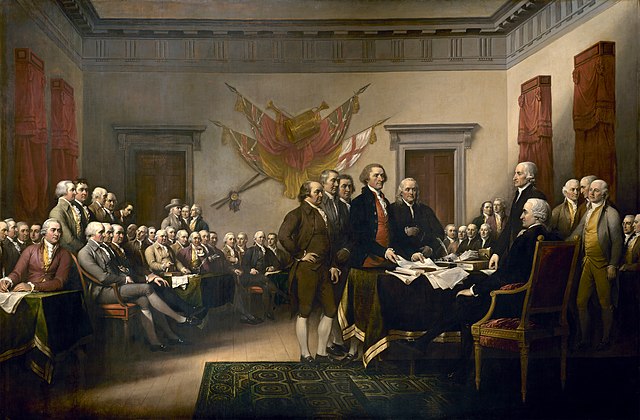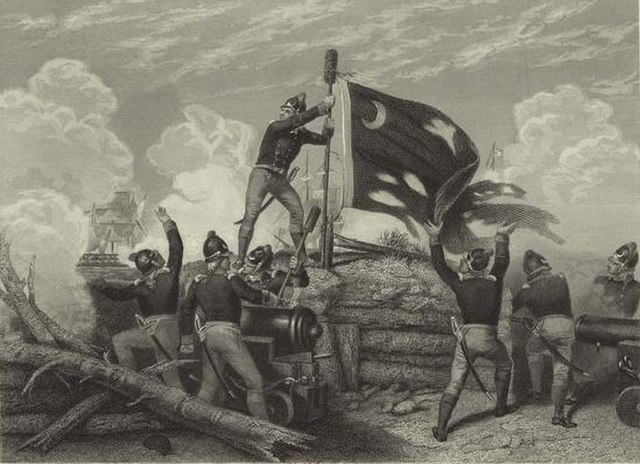New York and New Jersey campaign
The New York and New Jersey campaign in 1776 and the winter months of 1777 was a series of American Revolutionary War battles for control of the Port of New York and the state of New Jersey, fought between British forces under General Sir William Howe and the Continental Army under General George Washington. Howe was successful in driving Washington out of New York, but overextended his reach into New Jersey, and ended the New York and New Jersey campaign in January 1777 with only a few outposts near New York City under British control. The British held New York Harbor for the rest of the Revolutionary War, using it as a base for expeditions against other targets.
George Washington, a 1776 portrait by Charles Willson Peale
Admiral Richard Howe, from a mezzotint engraving by R. Dunkarton, after the painting by John Singleton Copley
General William Howe, 1777 mezzotint
The Battle of Long Island, 1776, an 1858 portrait by Alonzo Chappel, featuring Lord Stirling in the background leading an attack against the British in order to enable the retreat of other troops in the foreground across a mill pond to Brooklyn Heights.
American Revolutionary War
The American Revolutionary War, also known as the Revolutionary War or American War of Independence, was a military conflict that was part of the broader American Revolution, where American Patriot forces organized as the Continental Army and commanded by George Washington defeated the British Army.
Clockwise from top left: Surrender of Lord Cornwallis after the Siege of Yorktown, Battle of Trenton, The Death of General Warren at the Battle of Bunker Hill, Battle of Long Island, and the Battle of Guilford Court House
The Committee of Five, who were charged with drafting the Declaration of Independence, including (from left to right): John Adams (chair), Roger Sherman, Robert Livingston, Thomas Jefferson (the Declaration's principal author), and Benjamin Franklin
The British repulse a Continental Army attack at the Battle of Quebec in December 1775
Sergeant William Jasper of the 2nd South Carolina Regiment raises the fort's flag at the Battle of Sullivan's Island in Charleston, South Carolina in June 1776








